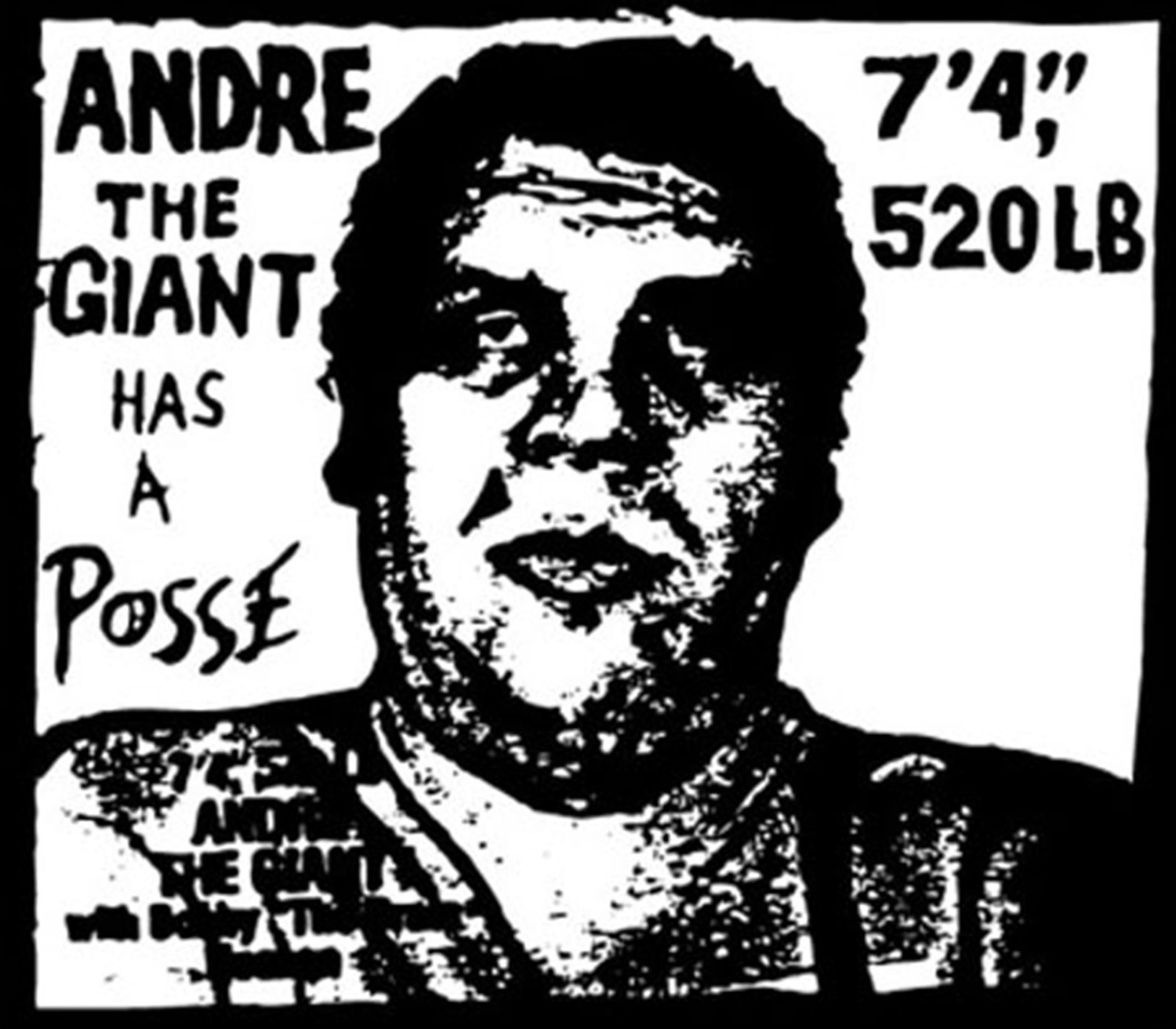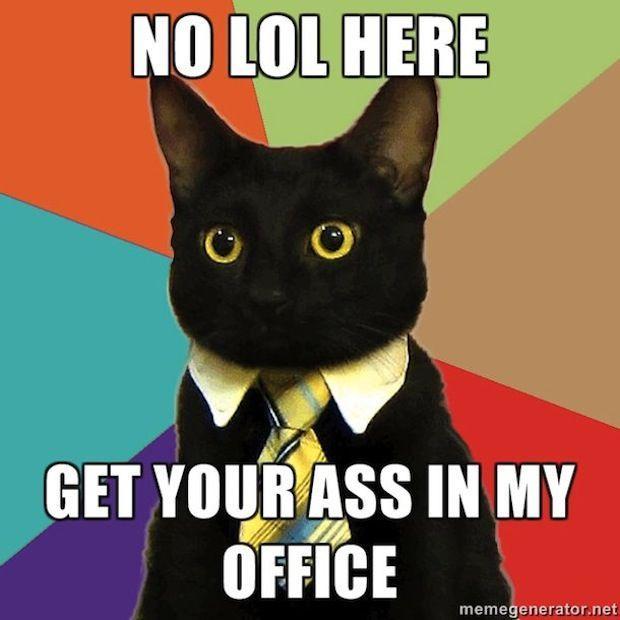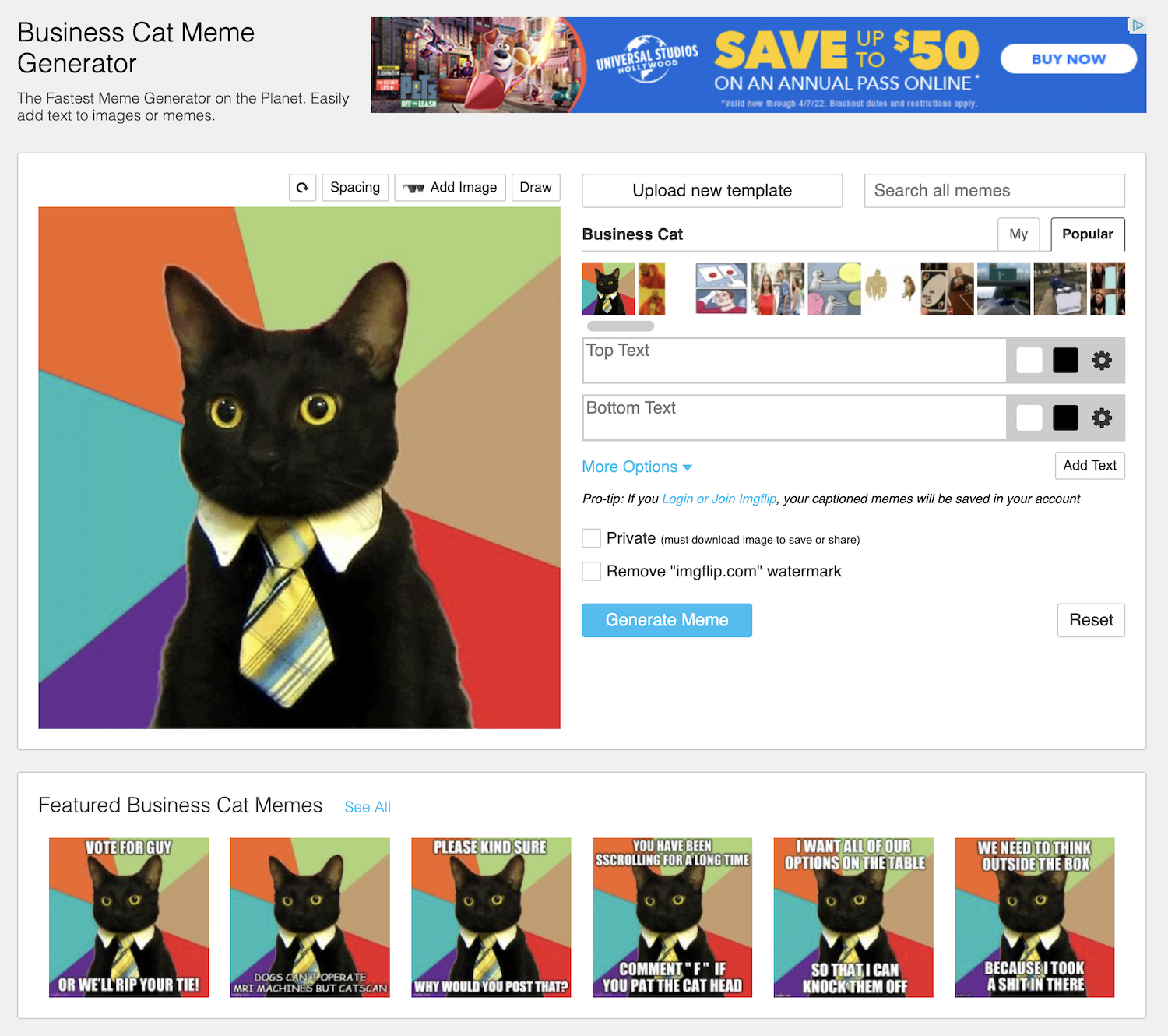A meme is unit of cultural information, such as an idea or belief, transmitted from one person to another. The word is an alteration of the Greek mimeme, meaning something that is imitated, not duplicated. The difference is important, as each iteration of a meme reflects the biases of its creator and subsequent co-creator. Memes in their analog form were first identified in 1976 by the evolutionary biologist Richard Dawkins, who confirmed that the primary component of meme-culture is the creative act of remixing and sharing memes with others. Applied online, this makes the customization of memes a facile method for social commentary and personal expression.

Andre the Giant Has a Posse, Pixel dimensions vary
Artist Shephard Fairey introduced his famous sticker meme “André the Giant Has a Posse” in the 1980s, and at the time he described it as a joke, “a skate crew thing that has no meaning except to cause people to react.” Fairey’s Situationist approach jibed with the era’s predigital zeitgeist and the meme became globally ubiquitous; an impressive accomplishment considering that the sticker was spread only by Fairey and his street teams. But even so, The Walrus contributor Nick Mount believes that “following the example set by galleries, some street art is more about the concept than the art.” So, when Titan Sports sued to stop the use of André the Giant’s trademarked name in 1994, Fairey promptly updated it with the iconic branding “OBEY.” Conceived in analog form, the OBEY meme was eventually digitized and went online. But despite Fairey’s cultural prescience, the combination of still-image and text that is considered a digital meme’s classic format first appeared in Nehal Patel’s 1997 meme “Mr. T Ate My Balls.” Since then, internet memes are almost exclusively presented as jpegs and viewed on phones or laptops. In 2015, the Queen’s Museum of the Moving Image presented the show “How Cats Took Over the Internet,” and it was a rare chance to see internet memes as wall pieces in a museum. But many didn’t agree with the concept and, after some criticism, Carl Goodman, the museum’s executive director, defended the show, stating that “we’re not saying that it’s art, we’re not saying that it’s not art; we’re saying it’s culturally significant.”

Business Cat, Original photo, Pixel dimensions vary
On January 1, 2011, Something Awful forum user Apple Jax posted a picture of her boyfriend’s cat Emilio wearing a tie while sitting on a living room couch. The photo was reposted to Reddit with the title “Business Cat”, then put on MemeGenerator. A second Reddit thread entitled “Business Cat Ain’t No Joke” marked the first appearance of the image macro, initially captioned “No LOL Here, Get Your Ass in My Office.” The “standard” Business Cat meme now featured a close-up of Emilio and his tie in front of a starburst background with an overlaid text that usually included something an office boss would do or request, but with a feline twist. Professor Ryan Milner posits that, “based on spatial online context, memetic imagery becomes fluid. The user must be in the know to understand the underlying message before the meme can effectively spread and evolve while in their hands.” As the Business Cat meme’s customizations proliferated, it became what is called an “advice animal image macro series.” Since then, the template’s combination of feline and office totems has proven so popular that, since there are certainly no limits to its duplication, its number of uses could be accurately described as infinite.

Business Cat, First Meme, Pixel dimensions vary
Memetics is the study of information and culture based on the analogy of Universal Darwinism. Digitally, it comes down to an algorithm that leads to a meme’s evolution through selection and variation. But as is the case with many memes that go viral, Business Cat puts an emphasis on humor, a quality Milner finds essential. “Humor is a great way to make something resonate, and if people see something that resonates with them, they are more likely to make it their own before passing it on.” Apologies to Marshall McLuhan, but the meme is now the message.


